Contents
KOYASAN in Wakayama Prefecture
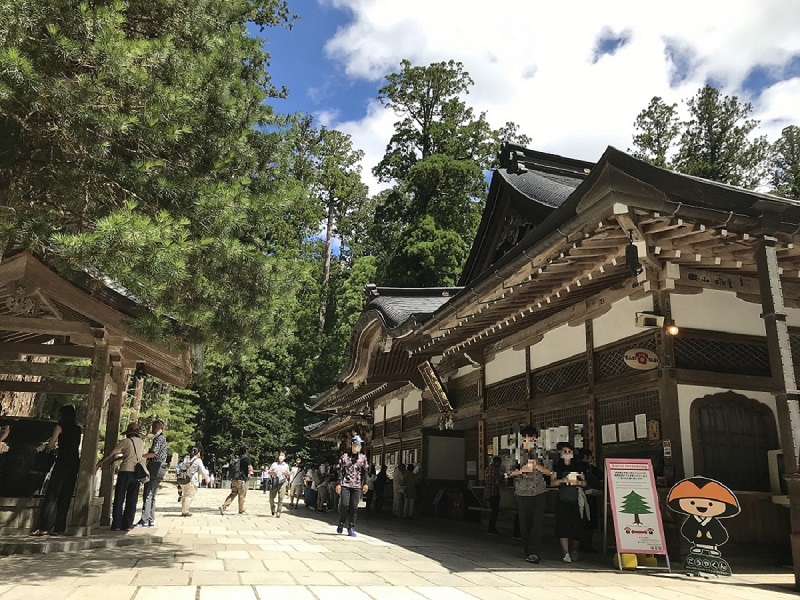
Koyasan is one of the great sacred place in Japanese Buddhism which is located at an altitude about 900 m with surrounded by mountains about 1,000m high. The whole Koyasan is the temple grounds. It is the main temple of the Shingon sect.
Koyasan was registered as a world heritage site. Koyasan is also said to be a power spot.
In the Heian period, in 816, Kukai known as Kobo Daishi was granted permission to open a Zen temple at Koyasan from Emperor Saga. Koyasan has 117 temples and is visited by many tourists from Japan and other countries around the world.
OKUNOIN, the mausoleum of Kobo Daishi

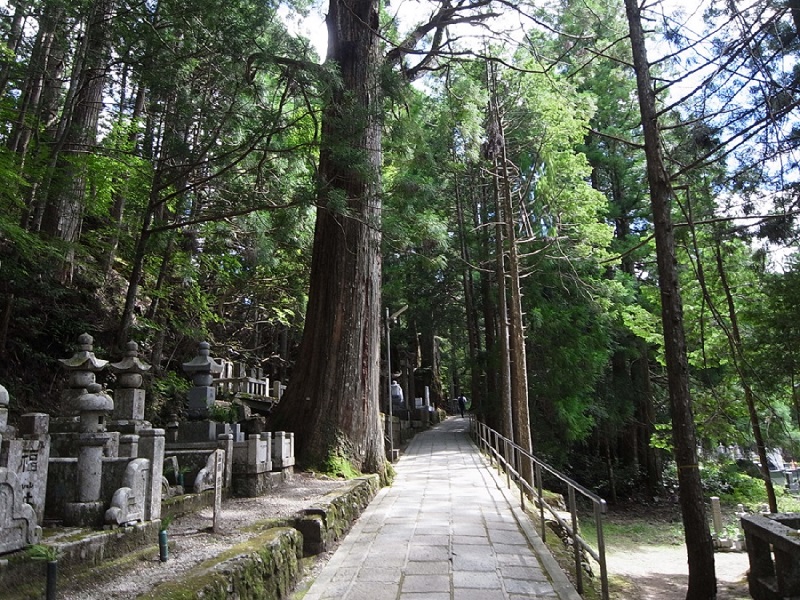
Okunoin is a sacred place with Kobo Daishi’s mausoleum.
The mausoleum of Kobo Daishi in Koyasan Oku no in is the origin of the religious belief.
Walk 2km path to Kobo Daishi’s mausoleum.
Along the way, hundreds of years old cedars grow high on the both sides.
And there are gravestones of the famous historical figures.


Many worshipers lined up and realized the depth of Kobo Daishi faith. Okunoin is a very sacred place, so photography is prohibited.
Kongobuji

Kongobuji is the head temple of Koyasan Shingon Buddhism.
Before the Meiji period, the whole Koyasan is said to be Kongobuji, after that one temple came to be called Kongobuji. You can take a break while drinking tea in Kongobuji.
Temples and Shukubo

This is a temple called Karukaya-do. It is known for sad stories. It is a place where a monk trained for 30 years without calling himself a father to a disciple who is a real child.

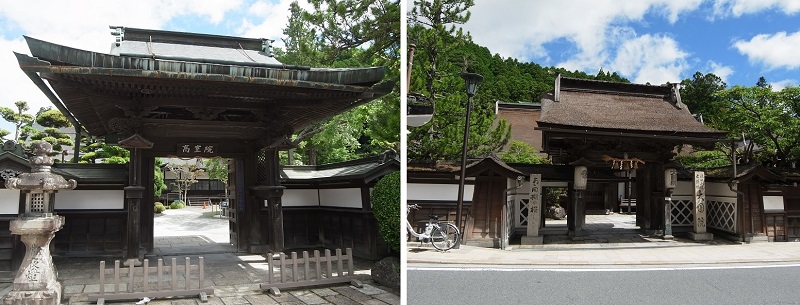
There are 117 temples on Mt. Koya, 52 of which can be used as shukubo temples (pilgrim’s lodging).
Each temple has different characteristics such as history, principal image, and garden, so it’s a good idea to choose your favorite temple and stay there.
One of the pleasures is Shojin Ryori (Buddhist Cuisine) served at the temple. You can also drink alcohol and beer.
You can also experience copying sutras at the temple.
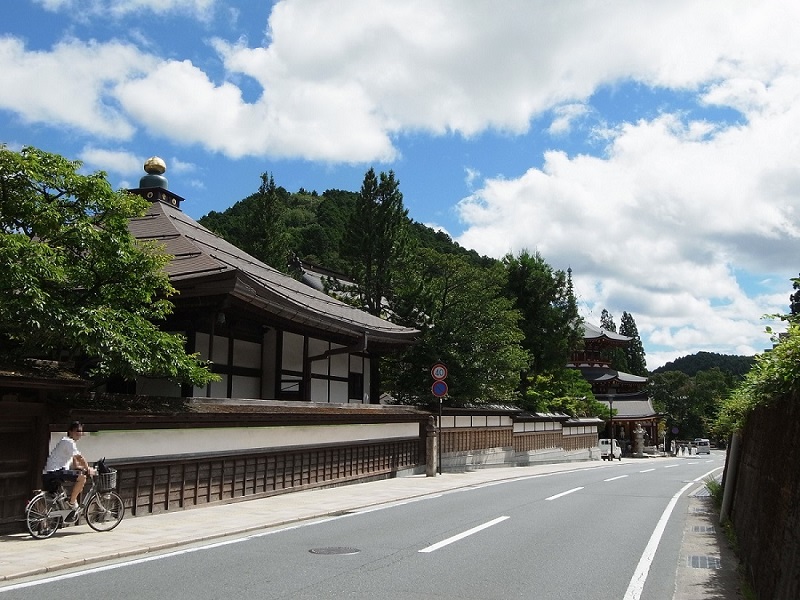
Koyasan is a vast land, so it is recommended to visit the temples on a convenient rental cycle.
You can enjoy sightseeing in Koyasan exhilaratingly. But you have to get off the bicycle and walk to Okunoin just before the approach.
Konpon Daito, training dojo

Konpon Daito is one of the most important areas in Mt. Koya.
In addition to Okunoin, it is one of the two major sanctuaries of Mt. Koya.
Initial construction of the monastic complex at Koyasan began here.
This is the place where Buddhist monks train.
Kobo Daishi built Konpon Daito as the fundamental training dojo of Shingon Buddhism.
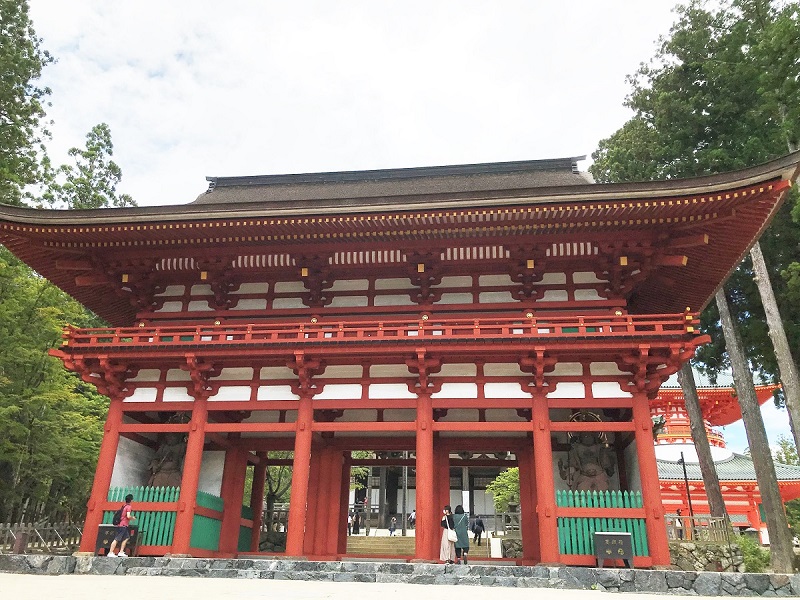
It is a central gate built in 819. It was rebuilt in 2015 to commemorate the 1200th anniversary of the founding of Koyasan. It was reborn as a beautiful vermilion-painted gate. On the roof, there are statues of Jikokuten, Tamonten, and others.
Shojin Ryori : Buddhist Cuisine

This is a monk’s meal contains vegetables, seaweed, beans and other vegetable ingredients.
That dish does not use meat or fish. Shojin Ryori is entirely vegan.
The dishes are colorful and various types of dishes. Sharpen my appetite. ^^

This is a soba set meal. It was delicious.
Goma Tofu (Sesame Tofu)

Tofu dish is one of the most popular foods in Shojin Ryori. This shop sells raw sesame tofu.
It was a rich sesame taste and a creamy texture.
Access
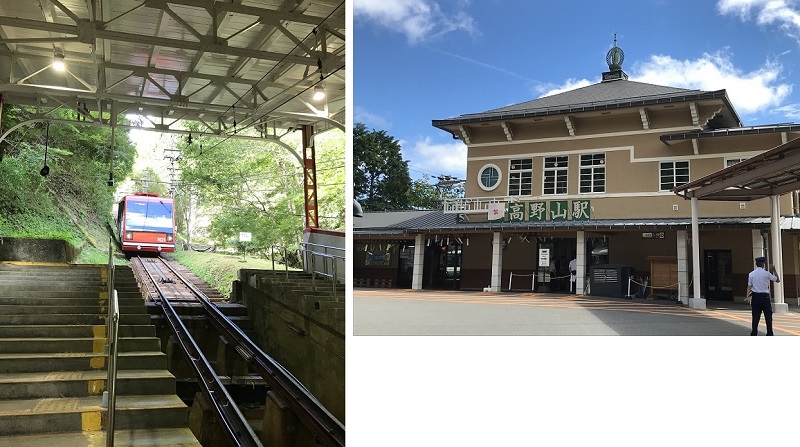
Take a cable car from Gokurakubashi Station on the Nankai Koya Line to the entrance to the sacred ground Koyasan. Then take the Nankai Bus to Koya town, about 10min.